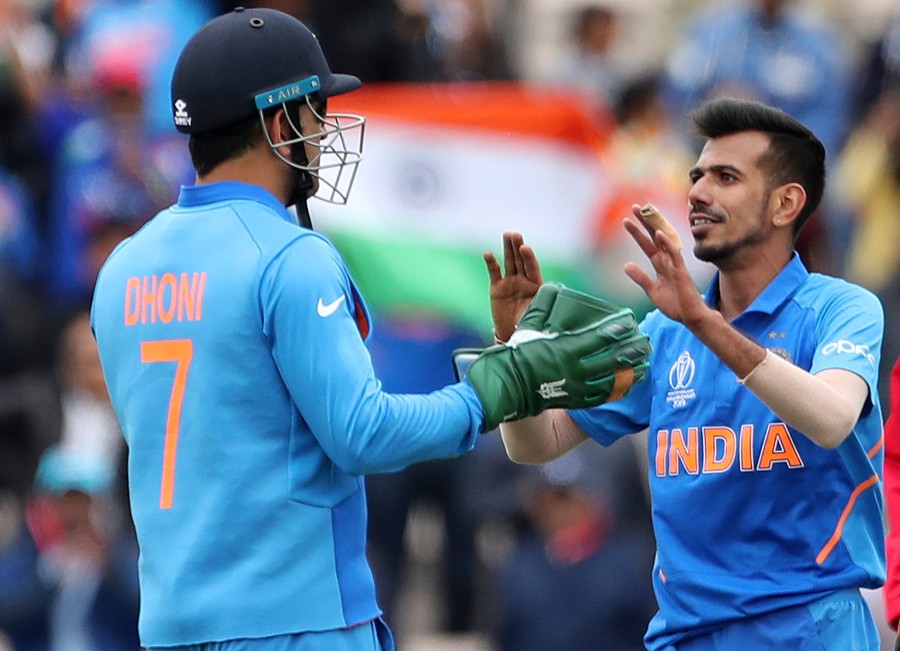
Take that glove off, Dhoni, you don't need it

One of the defining moments of Mahendra Singh Dhoni’s career was the open bus journey he and his teammates made on the roads of Mumbai after winning the 2007 T-20 World Cup.
Dressed in a white shirt, his famous tresses being gently swept back by the afternoon zephyr, Dhoni leaned on the railing of the open bus throughout the ride. While everyone around him was going crazy — fans were jumping around and dancing, teammates were roaring and clenching their fists, Dhoni looked on like a bemused spectator, as if wondering what the hungama is all about. Those trying to read his face that day would have noticed it was blank; there was neither joy nor jubilation on it. It was like the Mumbai sea that day — calm and silent, witnessing a city in high action.
Years later, Paddy Upton, the former mental trainer of the Indian team, put words to that blank face. “Dhoni,” he wrote in his memoir, The Barefoot Coach, has “incredible control over his emotions.”
“I would go as far as to say, with greatest respect for MS the man and the cricketer, that it is not emotional control but the lack of access to emotions. It is almost as if he doesn’t have them…” Upton observed.
The same absence of emotions possibly explains some of Dhoni’s greatest traits and triumphs — the decision to promote himself in the 2011 World Cup final, watch the ball sail over midwicket with rare sangfroid even as Yuvraj Singh broke into a bhangra at the other end of the Wankhede, and his legendary art of taking the game to death and then killing it with some brutal blows.
It is in this context we should analyse the ongoing controversy over Dhoni’s decision to wear gloves with the insignia of the Indian Army.
The question is: Why exactly does Dhoni need to wear the Army crest on his gear during the World Cup? As Hercule Poirot would have asked: Cui bono, Mr Dhoni? (Who benefits?)
Does the presence of an inverted dagger symbolic of balidaan (sacrifice) inspire the legendary Indian cricketer to perform better? No, knowing how Dhoni looks at life without trying to access emotions, its temporary highs, this is quite unlikely. For a cricketer, the sheer thrill of being on the field, wearing his country’s jersey, fighting for that one final moment of glory before he hangs his gloves should be inspiration enough. A pragmatic, unemotional man like Dhoni surely doesn’t need such tropes for performing at the highest level in his last World cup.
It doesn’t help the Army either. A cricket ground is a place to show skills with bat and ball, it is not a display board for symbols of warfare and aggression, even if some WAGs call cricket war minus the shooting. On a cricket field, players are expected to perform, take their game to new heights, compete with fairness and grit, but certainly not perform some form of balidaan.
Those who insist that he keeps it, arguing that India pull out of the World Cup if he is not allowed to wear the crest, should answer a simple question: Would you rather watch Dhoni bludgeon the opposition with his bat, or score silly jingoistic points over a symbol he and the Army don’t need displayed in England?
They also need to be reminded that on the cricket ground, such symbolism rarely impacts the outcome. India’s loss to Australia in the one-day game the team wore Army camouflage caps should be a timely reminder of the futility of such acts.
By all means, wear your patriotism on the glove, or the sleeve. Have the Tricolor emblazoned on the jersey, puff the chest out with pride as the national anthem is played, salute it with pride when the national flag is flown after a victory. But embracing a symbol of aggression, even if unwittingly, is just not the done thing on a sports ground.
There is a reason why such symbols are kept out of sport — once they become de rigueur, where does this free-for-all stop? Imagine if Pakistan were to take the field against India in their World Cup game wearing some military insignia, or camouflage caps of the kind Indians wore against Australia — another of Dhoni’s ideas — after the Pulwama attack on a CRPF convoy? It is precisely for this reason that the ICC has clear rules on logos, insignia and attire, something that Dhoni clearly violated, even if unintentionally.
It is quite likely that Dhoni’s decision to wear the insignia has no political subtext. The Indian legend is too great a professional to get into the murky territory of parading nationalism on a sports ground. In all likelihood, he feels drawn to the paratroopers whose crest he is sporting because of his own background — he is an honorary Lt Colonel. The insignia is most certainly a genuine display of affection and loyalty to the paratroops that trained him. But Dhoni’s first loyalty is to the game and its spirit. Cricket, like all sports, is about sportsmanship, about the battle between wood and leather, not about daggers and sacrifice.
Dhoni is currently representing India, not the Army, in England. The gloves should be off immediately. For India to win the Cup, Dhoni just needs a bat. And that quiet, calm face we saw on the open bus 12 years ago.

